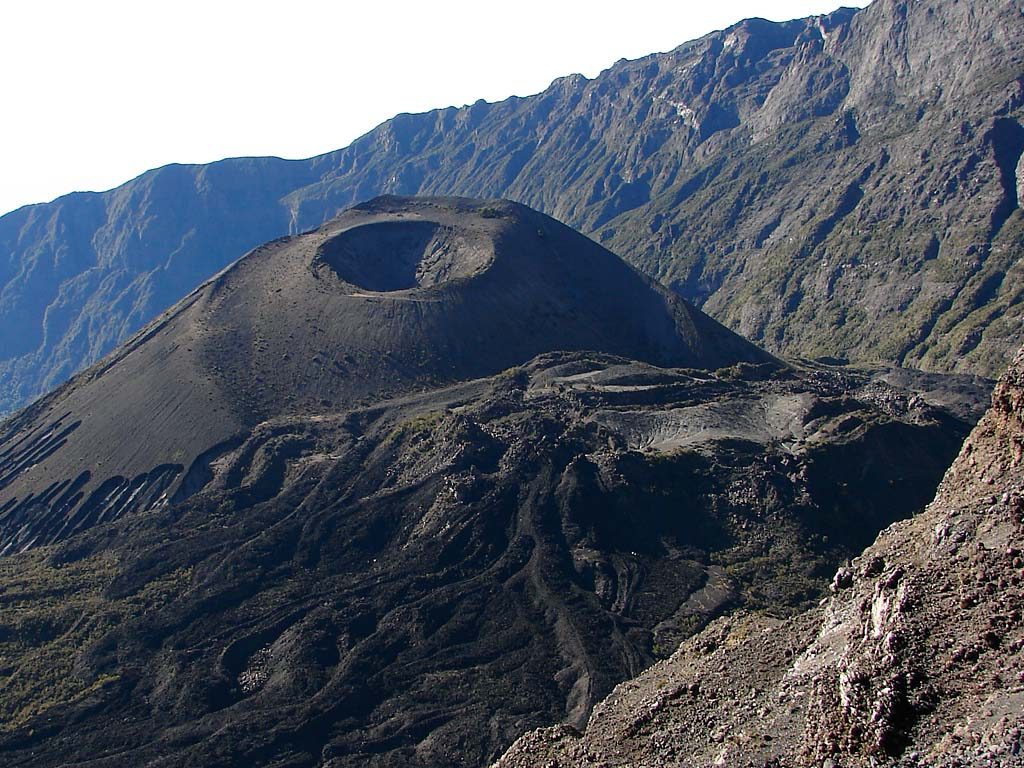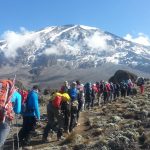Acclimatization On Kilimanjaro
Acclimatization on Kilimanjaro is the process by which the body becomes accustomed to lower availability of oxygen in the air and can only be achieved by spending time at various levels of altitude before progressing higher.

Oxygen, Air Density and Altitude
Acclimatization is best understood by looking at the relationship between oxygen in the air, air density and altitude changes.
At sea level oxygen accounts for about 21% of air and barometric pressure is around 760 mmHg (millilitres of mercury). As one climbs in altitude the amount of oxygen in the air remains about the same (up to approximately 21,000 meters or 69,000 feet), however, air density drops and thus less pressure is put on packing oxygen molecules closer together (imagine oxygen molecules moving further and further away as altitude increases).
For example, at about 3,600 meters (12,000 feet), barometric pressure is around 480 mmHg. With less air density, oxygen molecules are more widely dispersed in any given column of air and hence less oxygen is available per breath.
91% of the companies on Kilimanjaro do NOT offer supplementary oxygen – because it is potentially dangerous, wholly unnecessary and against the spirit of climbing Kilimanjaro – Karibu Adventure we do much safety we carrying oxygen cylinder with all our climbs. The challenge of the mountain lies within the fact that the summit is at a high elevation, where climbers must adapt to lower oxygen levels at altitude
Blood oxygen saturation
The body deals with this decrease in available oxygen by breathing faster and deeper (even at rest) so as to increase the oxygen content in the blood (i.e. blood oxygen saturation or SO2). We use pulse Oxymeter to check you SO2
Take a pre-acclimatization climb before tackling Kilimanjaro If you having time we recommend
Mount Meru
This is an excellent idea if you have the time and are feeling fit, and providing you do one of these walks immediately before you climb Kilimanjaro, these treks can be beneficial – and the views towards Kilimanjaro from Meru are delightful too.

Take rest days in Moshi
But what if you don’t have the time to do these? The answer is to plan your walk on Kilimanjaro slow as possible.
These ‘rest days’ are not actually days of rest at all – on the Marangu route climb six days climb, for example, guides usually lead their trekkers up from Horombo Huts to the Mawenzi Hut at 4600m before returning that same afternoon. But they do provide trekkers with the chance to experience a higher altitude before returning to below 3000-4000m again, thereby obeying the mountaineers’ old maxim about the need to ‘climb high, sleep low’ to avoid mountain sickness.
Choose a ’slow’ route up Kilimanjaro 7 – 8 days
It is possible to climb the mountain in five or six days, but why take the chance? Some clients want to minimize their days in order to save costs, which is understandable. But we feel that the additional cost is well worth it. Not only is it safer, but you increase the probability of your success, have more time to enjoy the experience, can take acclimatization hikes to other parts of the mountain you’d otherwise miss, and will probably feel better as well, given that there is less stress on your body.
Ask yourself this. How would you feel if you scheduled a route with the minimum required days, only to have to turn around within the first couple days because the rate of ascent was too quick? Wouldn’t you rather have added a couple days to your trip to give yourself a better chance, to be fairer to your body? Were the ‘savings’ you got for not taking additional days worth the cost of cutting your climb short, not making it to summit, or even worse, putting your health at risk?
Walk as slowly as possible on Kilimanjaro — go ‘pole pole’ if you don’t want to feel ‘poorly poorly’
Indeed, many experienced mountaineers believe the reverse is true: the less fit you are, the slower you will want to walk, and thus the greater chance you have of acclimatizing properly.
The best advice, then, is to go as slowly as possible. Let your guide be the pacemaker: do not be tempted to hare off ahead of him, but stick with him. That way you can keep a sensible pace – and, what’s more, can ask him any questions about the mountain that occur to you on the way.The most frequently heard phrase on Kilimanjaro is ‘Pole pole’. It means ’slowly slowly’, and it should be your mantra for your trek.
Take Diamox
In addition to being a cure for altitude sickness, Diamox can also act as a prophylactic – ie, it can prevent the onset of altitude sickness happening in the first place. There seems to be no hard-and-fast rule about how much you should take each day, and when you should start, but most companies seem to advise taking 125mg twice a day, starting on the first day of the trek.








